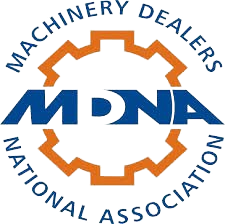Deepdive Into the Role of Rotary Encoders in Industrial Robotics

Digital encoders play a key role in a variety of industries. One such sector is industrial robotics. They are known for their speed, durability and power. However, when it comes to position accuracy, these robots can suffer. Particularly when it comes to applications where multiple axes are in play, each axis requires its own servo motor and positional accuracy. This is where rotary encoders come into play. This blog explores the benefits of rotary encoders for industrial robotics, common types, and general selection criteria.
Benefits Of Rotary Encoders
Excellent Position Sensing And Feedback
It is ideal if a rotary encoder can accurately process and communicate feedback, as it will provide the proper position of the robot’s tool center point. However, they need to be sensitive for this application. The problem is, the more sensitive a digital encoder is, the more susceptible it is to strong vibrations and electromagnetic interference.
Fortunately, inductive rotary encoders can solve this issue, as they are quite robust, making them ideal for handling vibrations. Moreover, they use an EnDat interference, which is adept at handling electromagnetic interference.
Improved Velocity and Acceleration Control
Rotary encoders monitor the rotation of the robot’s joints. This provides accurate feedback and monitors its velocity. With this closer monitoring, operators can adjust the acceleration of robots with fine-tuned accuracy, ensuring accurate movement over the robot’s arms. Ultimately, this leads to a highly precise and repeatable measurement and position accuracy.
Easy Multi-Axis Coordination
Being completely independent machines, industrial robots have multiple axes of motion. Careful monitoring of this motion is necessary to ensure precision and repeatability. Rotary encoders make this possible, as they offer reliable, continuous feedback, irrespective of the number of axes.
Types of Rotary Encoders Used in Robotics
Which types of rotary encoders are the best choice for robotics? Here are 3 probable choices:
Solid Shaft Encoders
These rotary encoders consist of a disc or a wheel that is attached to the shaft being monitored, and a stationary sensor. When the disc or wheel passes through the sensor, an electric signal is generated, indicating the speed and position of the shaft. Within this mechanism, these encoders can be further subclassified as absolute and incremental encoders.
Hollow Shaft Encoders
Hollow shaft encoders are known for their compact size and simplistic yet effective system. They consist mainly of a hollow bore or opening, within which the shaft rotates inside the housing. Their compact nature makes them an excellent fit for robotics, where spatial constraints are a major factor. Moreover, as the encoder is mounted directly onto the shaft, there is no risk of backlash, further improving its precision.
Dual Encoders
As the name suggests, dual encoders measure both position and rotational speed in robotics. They do so by using one digital encoder to measure the absolute position of the shaft and the other encoder to measure relative position/angular displacement. Thus, by using measurements from two different axes, this system provides a much more accurate and comprehensive feedback.
Encoder Selection Criteria For Robotics
Before selecting a digital encoder for robotics, consider the following criteria:
Application
What is the application of the robot in question? Is it for precision cutting or assembling aircraft fuselage? The type of rotary encoder will be considered based on application and specification criteria.
Cost Effectiveness
The next thing to consider is the cost effectiveness of the encoder. It is vital to consider if the encoder is the right one for a particular application as per cost. An expensive digital encoder might not be required for a particular application. Similarly, a cost-effective digital encoder may not be enough to handle the task.
Operating Conditions
Another important selection criteria is operating conditions. The type of encoder should also be determined by the environmental conditions where it is expected to perform. Apart from vibrations and other forces, one should also consider factors such as dust, moisture and temperature. Based on these conditions, it is possible to decide if the digital encoder should be sealed or exposed, or if one can opt for optical encoders if the environment is highly sterile.
Footprint
In this context, footprint is the area occupied by the robots. In industrial settings, this footprint is often limited. Therefore, the digital encoder selection must be done on this basis. Or else an encoder that is perfect in terms of other metrics might be too big in practical situations.
Flexibility
A digital encoder should ideally be flexible as it has to handle a lot of constraints. Thus, an encoder that can meet these different constraints is always a major plus.
Mounting
Assembly is a major cost driver in robotics. Adding a rotary encoder to the mix will drive up the costs even further. This is why it is necessary to go for an encoder that can be mounted easily. This will not only save money, but also set up times during operation.
Safety
When it comes to digital encoders, safety is often an afterthought. However, worker safety should be the top priority in this case. Look for encoders that are certified and have passed the demands of regulatory bodies in Canada.
Walker Machinery is a proud distributor of linear, angular and rotary encoders. We also supply digital encoders such as optical encoders, incremental encoders, absolute encoders and much more. To learn more about these products and their specifications, reach out to us at 905-876-0890.





